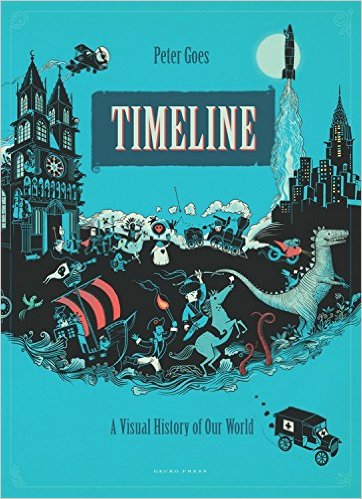Get the overview before the details – with timelines – Speed Reading Technique number 25
 When learning a new subject, make sure you understand the overview, the big picture, before you look at the details. Since most books are written sequentially (ie detail following detail), this usually means starting by previewing and looking at chapter and section headings and first and last chapters for a general understanding. Syntopic processing is excellent for getting an overview of a new subject.
When learning a new subject, make sure you understand the overview, the big picture, before you look at the details. Since most books are written sequentially (ie detail following detail), this usually means starting by previewing and looking at chapter and section headings and first and last chapters for a general understanding. Syntopic processing is excellent for getting an overview of a new subject.
This technique is the key to getting a good purpose (spd rdng tech 4) and can make the difference between success and failure when putting other techniques into practice. When you are learning something new, the brain learns most easily if it starts by getting an overall picture of what the subject is about before you go into detail.
HOW TO get an overview
Assuming that you know (almost) nothing about the subject, there are various ways to get an initial overview:
• google the subject online and read introductory articles or definitions
• ask for guidance from an expert or a mentor
• read simplified (children’s) books and/or summaries
• get hold of a college course first-year booklist for your subject and preview (spd rdng tech 2) all the books on the list (3-5 minutes each)
• go to a library or bookshop and preview (spd rdng tech 2 introductory books on your subject and choose the one/s you think will be most useful
• if you have several books on the subject, do syntopic processing (spd rdng tech 22), drawing a mindmap/rhizomap (spd rdng tech 17) of the subject overview
Get the overview with timelines
Timelines show in visually way the sequence of major events, cause-effect relationships and how specific events influence people and other events. Timelines will help you get the overview before you get into the details. Timelines will help you organise dates, numbers and other key information efficiently and effectively. Timelines help visually with memorising the information. And finally, timelines give a good framework to add additional information. Although some recommend to use the timeline strategy after reading – we recommend to do it before reading so your brain has acquired the big picture first.
Google your particular topic with added keyword ‘timeline’ and click on Images and you’ll find a few different timelines for the information you’re looking for.
You’ll find simple, chronological timelines like this one below
Or more rhizomatic ones like this one from a brilliant book for children called Timeline – A Visual History of Our World
Your purpose (spd rdng tech 4) is to write down all the key areas of your subject (often the chapter headings in a book) and know in general what each area refers to (much of your time may be spent just making sure you understand the contents list). Once you have this big picture, you can then get an overall idea of what each ‘chapter’ is about. After which you can go into as much detail as you like in any of the areas, confident that you know how they relate to other areas of the subject.
Sometimes the details are not important, in which case, the big picture is enough. But even if you need all the details, it is easier to fit them into a pattern than to get them separately and sequentially.
YES BUT … I need all the details.
1 Even if this is true, you can’t get them all at once and it is much harder to learn them sequentially. Start with the big picture – and then go into as much detail as you like.
2 Remember that reading is only part of the process of building up expertise. You need to intersperse your reading with putting the information into practice in some practical way.
Ania’s success story Ania was doing a one-year course in nutrition to complement her work as an osteopath. For whatever reason, she failed to do any work at all until just before the exam. At that point, she sat down with all the relevant books and worked for three days to produce mindmap after mindmap – following the model on the previous page – which she pinned up round the walls. She started with the general overview, then got an overview of each key area of the subject, and finally got into more and more detail. She was the only person on the course who got more than 90%.



